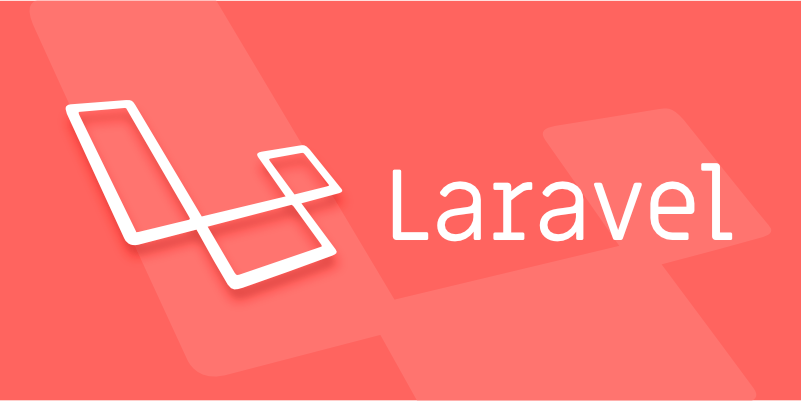Using Docker containerization when deploying Laravel applications can improve environmental consistency and collaboration efficiency. 1. Select php:8.2-fpm and nginx image construction services, and form a complete environment with containers such as db and redis; 2. The Nginx configuration needs to correctly point to public/index.php and enable URL rewriting rules; 3. Communication between containers should be implemented through service names rather than IP addresses, and environment variables should be managed with .env files; 4. Use .dockerignore to improve efficiency during construction, map ports to avoid conflicts, automatically generate Laravel keys, and simplify the deployment process with scripts. Although the entire process is complicated at the beginning, it is conducive to long-term maintenance and expansion.

Using Docker containerization is a very practical approach when deploying Laravel applications. It helps you maintain consistent operation in different environments, and also facilitates team collaboration and continuous integration deployment. Here are some practical suggestions and ways to deal with common problems.

Basic mirror selection and structure construction
The first step in Docker-based Laravel project is to choose a basic image. Usually we will use php:8.2-fpm or nginx images to build application services and web servers respectively. In addition, Laravel's dependency management requires Composer, so you may also need a temporary container to install PHP extensions and dependency packages.

A typical docker-compose.yml file will contain several services:
- app : PHP-FPM, run Laravel application
- webserver : Nginx, handles request forwarding
- db : MySQL or MariaDB database
- redis (optional): for cache or queue driver
Each service maps the local directory into the container, so that the code can take effect in real time after modifying it.

Nginx configuration considerations
Many people tend to ignore Laravel's URL rewrite rules when configuring Nginx. You need to make sure Nginx correctly points all requests to public/index.php . A simple configuration is as follows:
server {
listen 80;
server_name localhost;
root /var/www/html/public;
index index.php index.html index.htm;
location / {
try_files $uri $uri/ /index.php?$query_string;
}
location ~ \.php$ {
include fastcgi_params;
fastcgi_pass app:9000;
fastcgi_index index.php;
fastcgi_param SCRIPT_FILENAME $document_root$fastcgi_script_name;
}
} Don't forget to mount this configuration into your Nginx container and check if rewrite module is enabled.
Inter-container communication and environment variable settings
When a Laravel application connects to a database, it cannot use 127.0.0.1 , but should be accessed through the service name defined in Docker Compose. For example, if your database service is called db , then DB_HOST in the .env file should be db .
At the same time, it is recommended to use .env to manage environment variables in a unified manner, rather than hard-code them in configuration files. This way, even if you change the environment, you can adapt quickly.
Construction and deployment skills
There are several details to pay attention to during the construction process:
- Use
.dockerignoreto exclude unnecessary files (such as node_modules, vendor, etc.) to speed up the construction speed - If you have installed MySQL or other conflicting services locally, remember to change the port mapping, for example,
3306:3306to33061:3306 - Laravel's key can be automatically generated by running
php artisan key:generatein the container
During deployment, you can directly use docker-compose up -d to start the entire environment. If you want to simplify the process, you can also write a script to automatically execute build and migrate.
Basically that's it. Although containerization is a bit of a threshold at the beginning, once it starts, subsequent maintenance and expansion will be much easier.
The above is the detailed content of Containerizing Laravel Applications with Docker. For more information, please follow other related articles on the PHP Chinese website!

Hot AI Tools

Undress AI Tool
Undress images for free

Undresser.AI Undress
AI-powered app for creating realistic nude photos

AI Clothes Remover
Online AI tool for removing clothes from photos.

Clothoff.io
AI clothes remover

Video Face Swap
Swap faces in any video effortlessly with our completely free AI face swap tool!

Hot Article

Hot Tools

Notepad++7.3.1
Easy-to-use and free code editor

SublimeText3 Chinese version
Chinese version, very easy to use

Zend Studio 13.0.1
Powerful PHP integrated development environment

Dreamweaver CS6
Visual web development tools

SublimeText3 Mac version
God-level code editing software (SublimeText3)
 Working with pivot tables in Laravel Many-to-Many relationships
Jul 07, 2025 am 01:06 AM
Working with pivot tables in Laravel Many-to-Many relationships
Jul 07, 2025 am 01:06 AM
ToworkeffectivelywithpivottablesinLaravel,firstaccesspivotdatausingwithPivot()orwithTimestamps(),thenupdateentrieswithupdateExistingPivot(),managerelationshipsviadetach()andsync(),andusecustompivotmodelswhenneeded.1.UsewithPivot()toincludespecificcol
 Sending different types of notifications with Laravel
Jul 06, 2025 am 12:52 AM
Sending different types of notifications with Laravel
Jul 06, 2025 am 12:52 AM
Laravelprovidesacleanandflexiblewaytosendnotificationsviamultiplechannelslikeemail,SMS,in-appalerts,andpushnotifications.Youdefinenotificationchannelsinthevia()methodofanotificationclass,andimplementspecificmethodsliketoMail(),toDatabase(),ortoVonage
 Understanding Dependency Injection in Laravel?
Jul 05, 2025 am 02:01 AM
Understanding Dependency Injection in Laravel?
Jul 05, 2025 am 02:01 AM
Dependency injection automatically handles class dependencies through service containers in Laravel without manual new objects. Its core is constructor injection and method injection, such as automatically passing in the Request instance in the controller. Laravel parses dependencies through type prompts and recursively creates the required objects. The binding interface and implementation can be used by the service provider to use the bind method, or singleton to bind a singleton. When using it, you need to ensure type prompts, avoid constructor complications, use context bindings with caution, and understand automatic parsing rules. Mastering these can improve code flexibility and maintenance.
 Strategies for optimizing Laravel application performance
Jul 09, 2025 am 03:00 AM
Strategies for optimizing Laravel application performance
Jul 09, 2025 am 03:00 AM
Laravel performance optimization can improve application efficiency through four core directions. 1. Use the cache mechanism to reduce duplicate queries, store infrequently changing data through Cache::remember() and other methods to reduce database access frequency; 2. Optimize database from the model to query statements, avoid N 1 queries, specifying field queries, adding indexes, paging processing and reading and writing separation, and reduce bottlenecks; 3. Use time-consuming operations such as email sending and file exporting to queue asynchronous processing, use Supervisor to manage workers and set up retry mechanisms; 4. Use middleware and service providers reasonably to avoid complex logic and unnecessary initialization code, and delay loading of services to improve startup efficiency.
 Managing database state for testing in Laravel
Jul 13, 2025 am 03:08 AM
Managing database state for testing in Laravel
Jul 13, 2025 am 03:08 AM
Methods to manage database state in Laravel tests include using RefreshDatabase, selective seeding of data, careful use of transactions, and manual cleaning if necessary. 1. Use RefreshDatabasetrait to automatically migrate the database structure to ensure that each test is based on a clean database; 2. Use specific seeds to fill the necessary data and generate dynamic data in combination with the model factory; 3. Use DatabaseTransactionstrait to roll back the test changes, but pay attention to its limitations; 4. Manually truncate the table or reseed the database when it cannot be automatically cleaned. These methods are flexibly selected according to the type of test and environment to ensure the reliability and efficiency of the test.
 Choosing between Laravel Sanctum and Passport for API authentication
Jul 14, 2025 am 02:35 AM
Choosing between Laravel Sanctum and Passport for API authentication
Jul 14, 2025 am 02:35 AM
LaravelSanctum is suitable for simple, lightweight API certifications such as SPA or mobile applications, while Passport is suitable for scenarios where full OAuth2 functionality is required. 1. Sanctum provides token-based authentication, suitable for first-party clients; 2. Passport supports complex processes such as authorization codes and client credentials, suitable for third-party developers to access; 3. Sanctum installation and configuration are simpler and maintenance costs are low; 4. Passport functions are comprehensive but configuration is complex, suitable for platforms that require fine permission control. When selecting, you should determine whether the OAuth2 feature is required based on the project requirements.
 Implementing Database Transactions in Laravel?
Jul 08, 2025 am 01:02 AM
Implementing Database Transactions in Laravel?
Jul 08, 2025 am 01:02 AM
Laravel simplifies database transaction processing with built-in support. 1. Use the DB::transaction() method to automatically commit or rollback operations to ensure data integrity; 2. Support nested transactions and implement them through savepoints, but it is usually recommended to use a single transaction wrapper to avoid complexity; 3. Provide manual control methods such as beginTransaction(), commit() and rollBack(), suitable for scenarios that require more flexible processing; 4. Best practices include keeping transactions short, only using them when necessary, testing failures, and recording rollback information. Rationally choosing transaction management methods can help improve application reliability and performance.
 Handling HTTP Requests and Responses in Laravel.
Jul 16, 2025 am 03:21 AM
Handling HTTP Requests and Responses in Laravel.
Jul 16, 2025 am 03:21 AM
The core of handling HTTP requests and responses in Laravel is to master the acquisition of request data, response return and file upload. 1. When receiving request data, you can inject the Request instance through type prompts and use input() or magic methods to obtain fields, and combine validate() or form request classes for verification; 2. Return response supports strings, views, JSON, responses with status codes and headers and redirect operations; 3. When processing file uploads, you need to use the file() method and store() to store files. Before uploading, you should verify the file type and size, and the storage path can be saved to the database.






